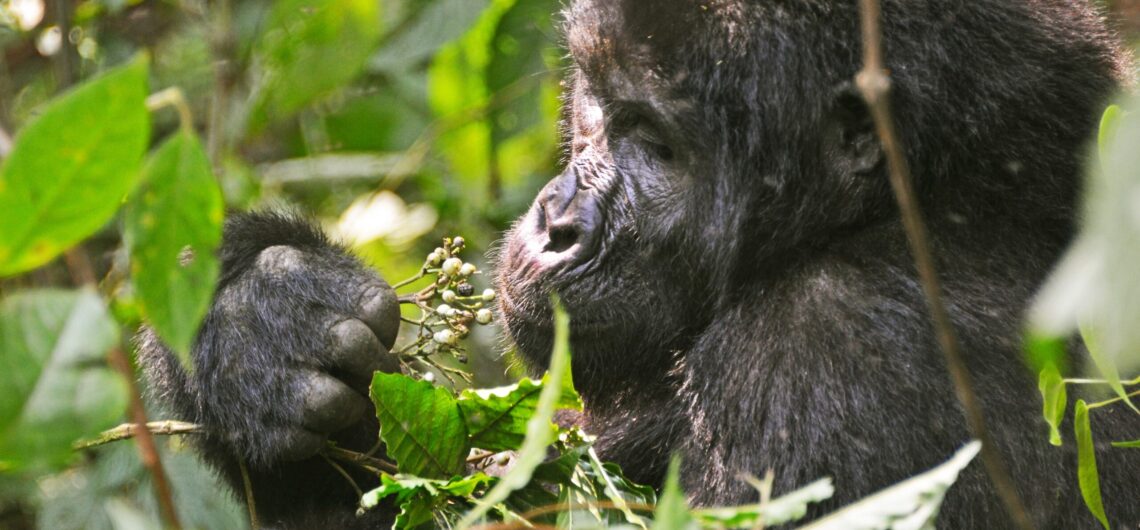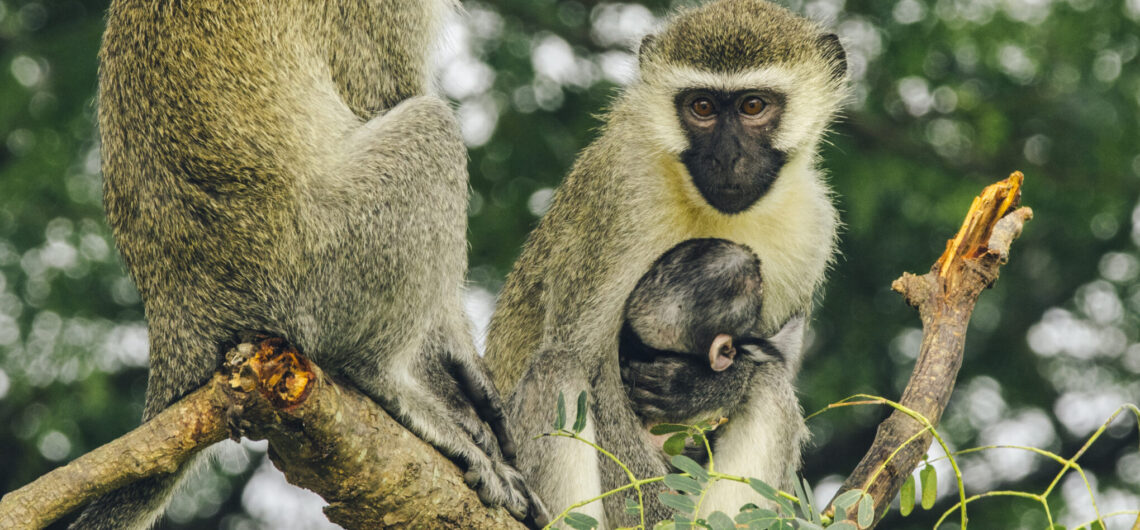Mountain gorillas are primate species in a few ecosystems of Africa, they are a subspecies of the eastern gorilla’s gorilla beringei beringei living in mountainous areas in Uganda they are found in the Bwindi Impenetrable National Park and the Mghainga National Park, in Rwanda they are situated in the volcanoes national park while in the democratic republic of Congo in the Virunga national park, these are the only places of the world to see the critically endangered species, they roam freely in the conservation areas without being captivated. The Bwindi impenetrable national park in the southwestern corner of Uganda hosts half the population of the gorillas they love within the four sectors of the park Nkuringo, Rushaga, Buhoma, and Ruhija.
What do gorillas eat? This is a question that lingers so many times, mountain gorillas are mostly herbivores in nature, being the world’s largest primates they need lots of food to survive, they feed on forest plants, dead tree backs, leaves stems, fruits, mushrooms and occasionally insects, since it is a high altitude zone, there is less of fruit and more of plants, the primates are specific on what they want to eat on a particular plant type, for example, they have been sighted stripping plants in order for them to get the inner part of the stem other plants like mimlopsis they take on the leaves. An adult mountain gorilla eats about 18 kilograms of food.
Mountain gorillas are not so water friendly and hence it is hard to drink water however the plants which they feed on are succulent enough for them to have enough water in their bodies for survival. Gorillas do not feed in one point but rather after consuming, they move to the next part to allow the regrow of the vegetation. They live in families of up to 20 members led by a male silverback, baby gorillas are taken care of by their mothers until the age of 2 years. The primates are territorial in nature hence it is hard to find more than 1 silverback in the same group, families consist of blackbacks, juveniles, and females, they nest on the ground which sometimes makes it easy for travelers to know the actual number of the primates as each one of them makes a nest except for the babies who share with females. They are playful jumping from one tree to another.
Mountain gorillas present an opportunity to experience mountain gorillas, trekking is one of the amazing things to do while in Uganda, it takes place beginning at the park headquarters, in groups of 8 you will be allocated a gorilla family to track, it takes 2-8 hours in search depending on how far the gorilla families have moved. Gorilla trekking is a strenuous activity that will need preparation both mentally and physically, upon meeting the primates an hour is allowed while with them later which you return to be awarded a gorilla trekking certificate, for travelers who would like to spend more time with the primate’s gorilla habituation experience is the most ideal thing to do as it allows am all day experience.


